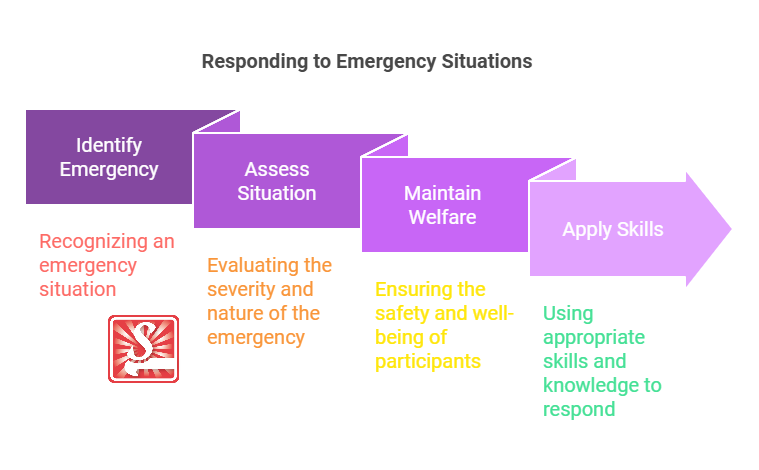Assembly Points in Responding to Emergency Situations
Posted by SkillMaker in Dec, 2024
What is a concise description of assembly points in responding to emergency situations?

Assembly points are designated safe areas where individuals gather during an emergency. These sites are pre-determined in emergency planning to ensure a coordinated and efficient response, facilitating orderly evacuations and easy headcounts to account for all personnel.
Why do people in enterprises need assembly points when responding to emergency situations?
Enterprises need assembly points to safeguard employees and visitors in emergencies. Designated assembly points help enterprises maintain safety by allowing for swift evacuations, ensuring everyone is accounted for, and preventing chaos during potentially dangerous situations.
“Assembly points are critical in orchestrating an orderly evacuation, ensuring safety and accountability during emergencies.”
What are the key components or elements of assembly points when responding to emergency situations?
Key elements of assembly points include:
- Location: Designated safe zones away from potential hazards.
- Visibility: Clearly marked with signs for easy identification.
- Accessibility: Easily reachable from all areas of the facility.
- Capacity: Adequate space to accommodate all personnel safely.
- Communication: Clear instructions on where and how to proceed.
What key terms, with descriptions, relate to assembly points when responding to emergency situations?

Registered Trademark®
- Evacuation Plan: A strategised exit procedure that directs personnel to assembly points.
- Emergency Muster: The process of gathering personnel at the assembly point for accountability.
- Fire Drill: A practice exercise that helps individuals familiarise with evacuation routes and assembly areas.
- Safety Warden: A designated individual responsible for guiding people to safety during emergencies.
- Headcount: A method of accounting for all personnel once at the assembly point.
Who is typically engaged with operating or implementing assembly points when responding to emergency situations?
Staff engaged in implementing assembly points include safety managers, emergency coordinators, safety wardens, and security personnel. These roles work collaboratively to ensure that assembly points are effectively utilised and that emergency protocols are followed during crises.
How do assembly points align or integrate with other components of Sport and Recreation?

Assembly points complement safety procedures in Sport and Recreation by providing a clear, organised method of dealing with emergencies, ensuring that participants and staff follow a structured evacuation plan. Integrated with other safety measures, assembly points help in achieving a safe environment for sports activities and events.
Where can the student go to find out more information about assembly points when responding to emergency situations?
What job roles would be knowledgeable about assembly points when responding to emergency situations?
Roles include:
- Safety Officers
- Emergency Management Coordinators
- Facility Managers
- Security Supervisors
- Fire Wardens
What are assembly points like in relation to sports, family or schools?

In sports, assembly points resemble a team’s dugout, where players regroup and prepare before resuming play. For families, they are akin to a pre-determined meeting spot after a day out, ensuring everyone gathers safely. In schools, assembly points take the form of assigned meeting locations during fire drills, teaching students organisation and safety in emergencies.
(The first edition of this post was generated by AI to provide affordable education and insights to a learner-hungry world. The author will edit, endorse, and update it with additional rich learning content.)


 Post Tagged with
Post Tagged with